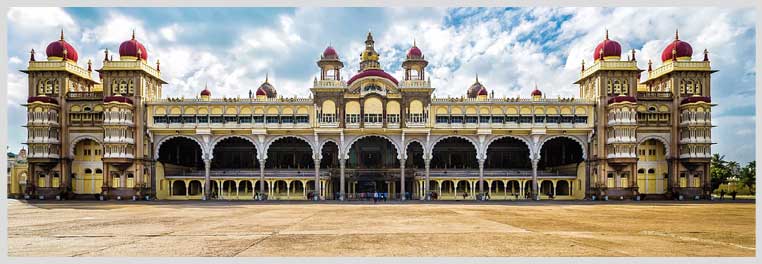MYSORE TRAVEL & TOURISM GUIDE, KARNATAKA
A glimpse of Southern India"

After breakfast depart for Mysore. En route visit Srirangapatnam, the capital of Haider Ali and his son Tipu Sultan till 1799, when the British captured it. It was here that the Tiger of Mysore, as Tipu was called, fought and died. Outside the ruins of the old fort is Daria Daulat (Splendour of the sea), Tipu's summer palace, set in an exquisite garden. The palace has been converted into a museum and houses some of Tipu Sultan's belongings. The tomb of Tipu Sultan and his parents marks the end of the glorious history of this town.
Mysore the capital of the erstwhile princely state of that name, is famous for its silk and sandalwood, as well as its numerous palaces, well laid out boulevards and beautiful parks. Visit the Maharaja's Palace, the most impressive of Mysore's ochre-coloured buildings - a modern edifice built in 1897, where the oriental decorative imagination runs wild. One of the largest palaces in India, it is a sort of gigantic synthesis of Hindu and Muslim styles. Entrance gateways, domes, arches, turrets, colonnades, sculptures can be seen here in magnificent profusion. The royal family's private chambers, including the impressive Durbar Hall, are open to the public. The Marriage Hall has life-like paintings of the Dassera procession and in the museum is the ruler's golden elephant throne, used during these festivities. St Phelomena's Church is a magnificent cathedral, the largest in South India. Chamundi Hill lies 10 km from Mysore and is named after Chanduswari, the consort of Lord Shiva and the patron goddess of the royal family of Mysore. On the way up is a colossal figure of Nandi, carved out of a single rock in 1659. The view from the top of the hill is superb.



